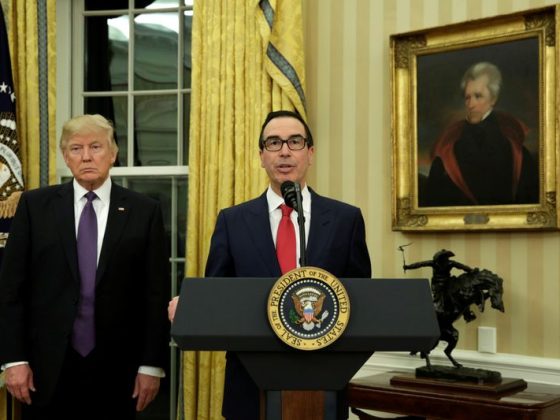
Investing.com — After a historic week for markets in the wake of Donald Trump’s resounding win in the U.S. presidential election investors will be turning their attention to inflation numbers for indications on how the economic outlook may begin to shift in the light of election results. Market participants will also get a chance to hear from several Federal Reserve officials after last week’s rate cut. Here’s your look at what’s happening in markets for the week ahead.
- CPI
Investors will be closely watching Wednesday’s U.S. inflation data for October, as markets wait to see if president-elect Trump will push ahead with economic policies that could be inflationary.
Economists expect the consumer price index to have risen at an annual rate of 2.4% in October, matching September’s pace. September’s annual increase was the smallest in more than three-and-a-half years, reinforcing Fed rate-cut bets.
But the central bank may have been thrown a curveball with Trump’s election, since many believe that his proposals, in particular higher tariffs, could push up consumer prices. Following the Fed’s 25 bps rate cut on Thursday, Chair Jerome Powell gave little guidance on how fast and far rates will now fall.
- Market rally to face inflation test
Market watchers will be waiting to see whether this week’s inflation numbers will help sustain the record-breaking stock rally that has received a boost from Trump’s election win.
The benchmark S&P 500 surged to an all-time high and hit the 6,000 level for the first time on Friday, as expectations of tax cuts and looser regulations under Trump boosted risk appetite.
A reassuring economic outlook from the Fed, which delivered a widely expected 25 basis point rate cut on Thursday, also helped boost sentiment.
The central bank’s ability to keep cutting rates, however, will be tested by whether incoming data shows inflation continuing to moderate.
- Fedspeak
Investors will get a chance to hear from several Fed officials this week, starting with Governor Christopher Waller on Tuesday. Richmond Fed President Thomas Barkin and Philadelphia Fed president Patrick Harker are also due to make appearances the same day.
Markets will likely pay closer attention to officials speaking after Wednesday’s inflation numbers, starting on Wednesday with Dallas Fed president Lorrie Logan, St. Louis Fed president Alberto Musalem and Kansas City Fed president Jeff Schmid.
Fed Chair Jerome Powell is to deliver what will likely be closely watched remarks on Thursday. Meanwhile, New York Fed president John Williams will cap off the week’s speaking docket later the same day at NY Fed event on “Making missing markets”.
- Bitcoin hovering near $80,000
Bitcoin is on the verge of reaching $80,000 for the first time, boosted by expectations that Trump will roll out more crypto-friendly regulations.
The world’s largest cryptocurrency hit a record high of $79,692 overnight Sunday and was trading at $79,333.50 as of 5:13 ET (10:13 GMT).
During his campaign, Trump vowed to make the U.S. the “crypto capital” of the world by creating a strategic Bitcoin stockpile and appointing friendlier regulators.
He has emerged from last Tuesday’s election in a stronger than expected position with his Republican Party in control of the Senate and on the verge of holding a narrow majority in the House.
Bitcoin was also bolstered after Jay Powell said Thursday that its path was unchanged in the face of near-term political changes in the U.S.
His comments helped spur gains across most risk-driven assets, including crypto.
- Oil prices
Oil prices fell on Friday as China’s latest package of stimulus measures left energy traders underwhelmed, but despite the losses still managed to notch up a weekly gain.
U.S. crude futures settled at $70.35 per barrel, down by 2.7%. Global benchmark Brent crude futures fell by 2.3% to $73.87 per barrel.
Chinese authorities announced a package easing debt-repayment strains for local governments, but analysts said the measures will do little to directly target demand. Deflationary pressures on the Chinese economy have been a heavy drag on oil prices this year.
But prices still ended the week higher amid expectations for tighter sanctions on Iran and Venezuela under the incoming Trump administration, which could cut oil supply to global markets.
Prices also received a boost from Thursday’s Fed rate cut. Interest rate cuts typically boost economic activity and energy demand.
–Reuters contributed reporting


